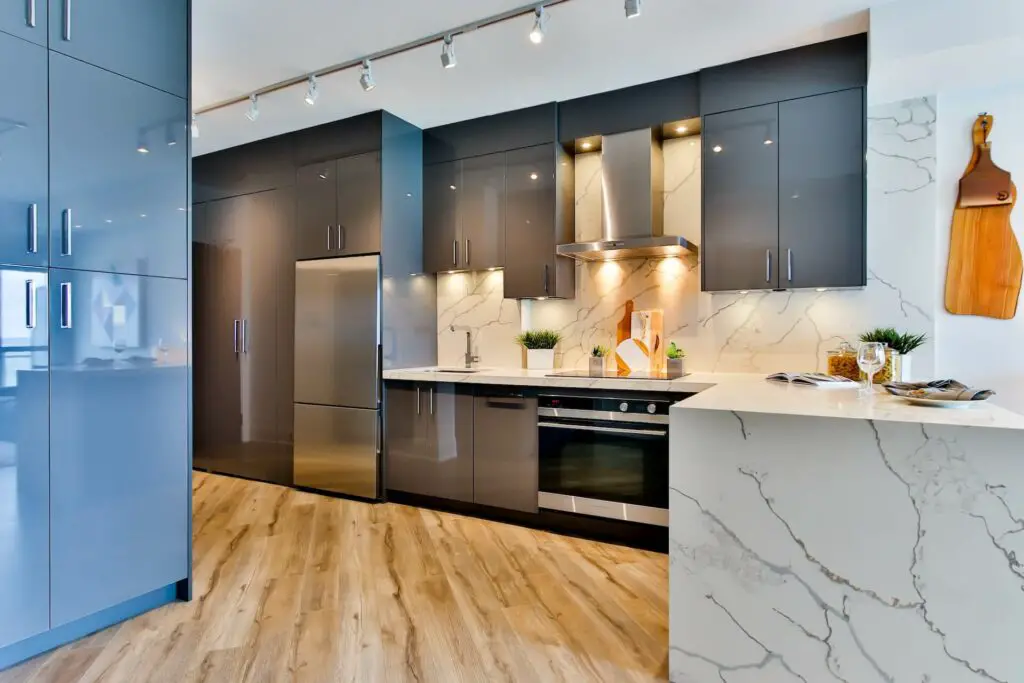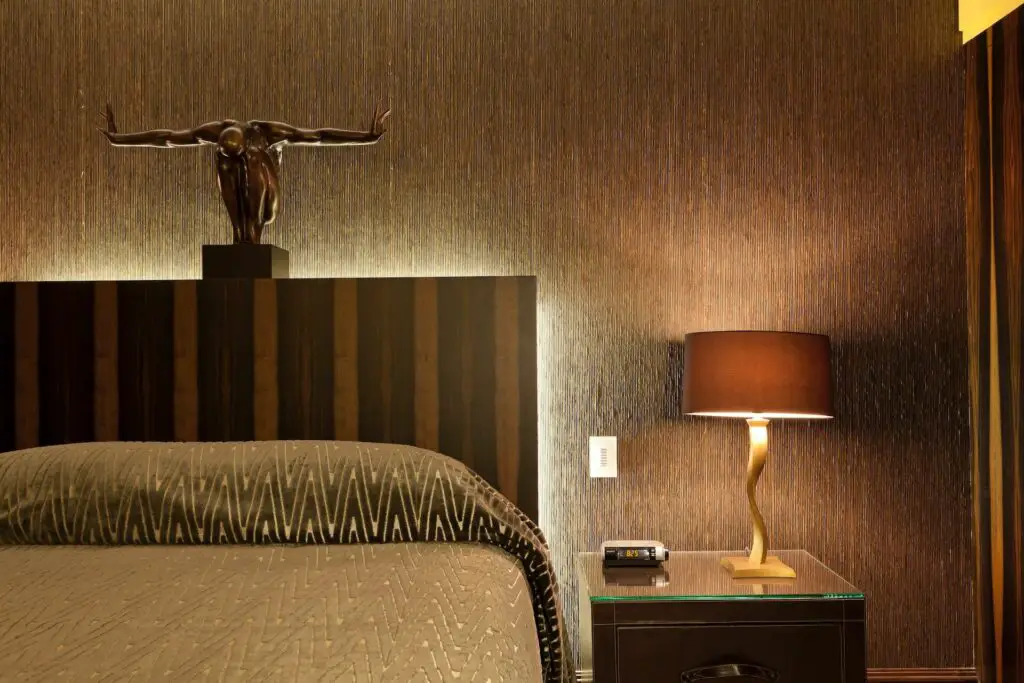Very often I come across work or personal spaces where the lighting is just off. A common pitfall is using the wrong temperature for white lights. White light is the single best choice for task-oriented rooms but can also be elegantly used to create a relaxing atmosphere. Mix up warm with cool white and you might have a problem.
So what is the difference between warm white and cool white, and how can we use them best?
Warm white light is more yellowish and better for relaxing while cool white appears more white/blueish and it’s better for performing tasks. Color temperature is measured in Kelvin, with lower values being warmer (2700–3000 K) and higher values being cooler (4000–5000 K).
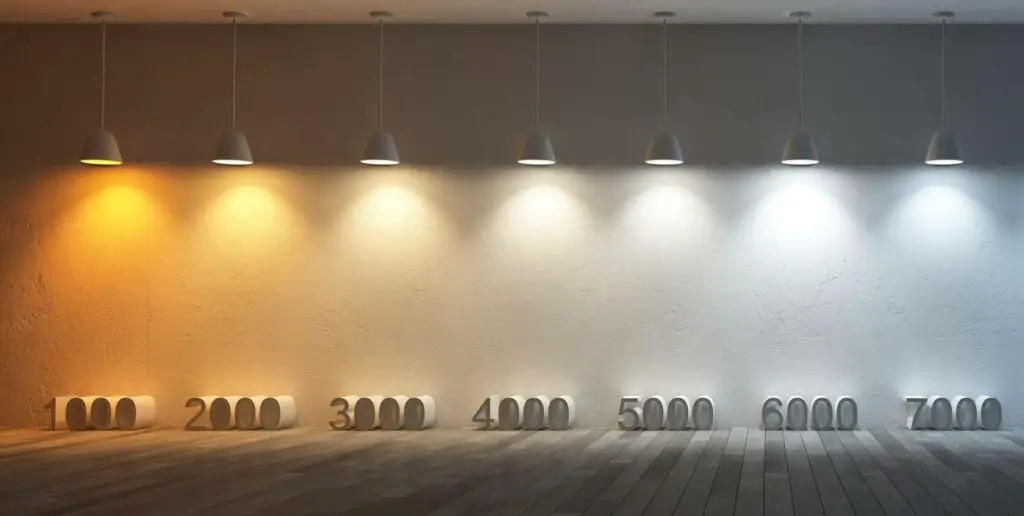
Lighting holds the potential to truly make or break your interior design plan. The reality is that if you don’t illuminate your furniture, plants, wall art, and even wall paint properly, they simply won’t have the same impact – you won’t manage to create as much drama in your space. You might have noticed that well-lit rooms are used a lot more than poorly lit spaces.
How Does Color Temperature Affect Your Mood?
Lighting has been shown to significantly affect our mood and emotions, with inadequate lighting being critical to our mental health and perception. A study published in the Journal of Consumer Psychology in 2014 showed that intense lighting leads to greater emotions (both positive and negative).
“…ambient brightness makes people feel warmer, which increases the intensity of their affective response, including sensation seeking from spicy-hot foods, perception of aggression and sexiness (“hotness”) in others, and generating more extreme affective reactions toward positive and negative words and drinks.”
Considering that most everyday decisions take place under bright light and that dimmed lights reduce emotionality, it’s obvious why a good lighting scheme is vital for every household. But how does color temperature play into this?
What exactly is color temperature?
Color temperature is simply a number from 1000 to 10,000 Kelvin used to indicate the tone of the color. A lower value (<3500 K) is used for warmer lights, starting from red/orange and going up to yellowish. This is the most common range for a typical incandescent house bulb. In the 3300–4000 K range we have the so-called natural or neutral color, and cool light is somewhere between 4000 and 5000 K. This has a blueish shade. Daylight is in the 5600–6500 K range.
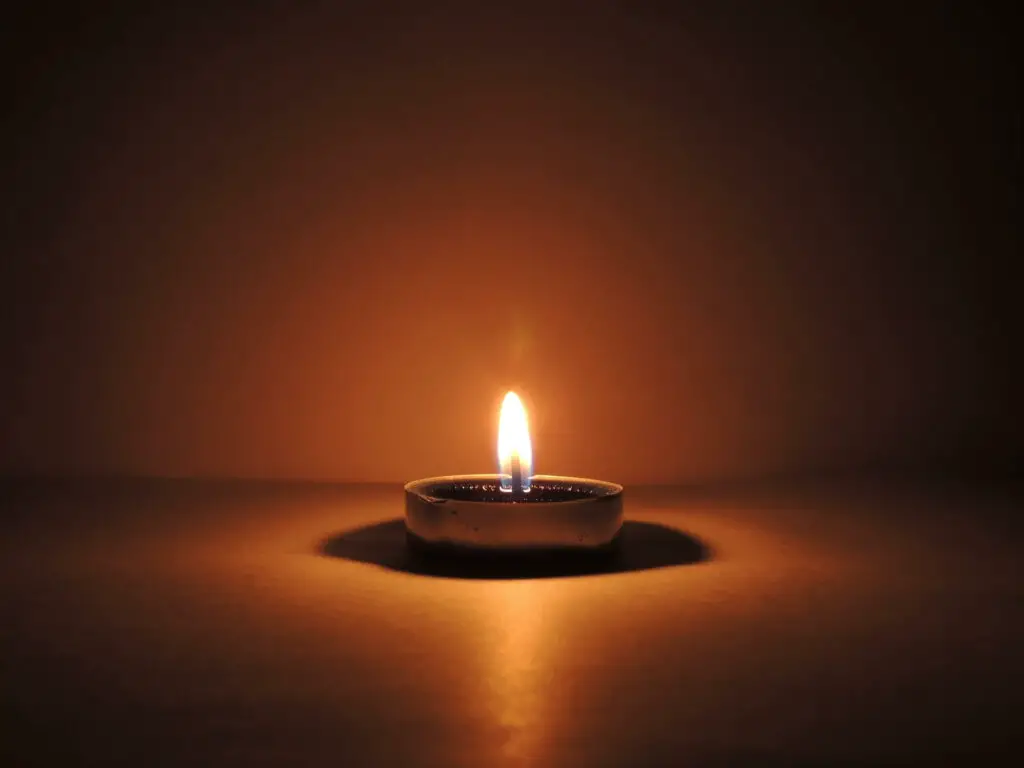
The color temperature of a candle flame is about 1500–1800 K.
What is the main benefit of warm light?
Warm white light (2700–3000 K) has a soft and cozy feel to it. It is more flattering and easier on the eyes. Thus, it is best used in bedrooms, living rooms, and other spaces where a relaxing atmosphere is desired. Trying to perform an important task, or any task for that matter, under low warm light can be frustrating and unproductive. Turn on those warm lights when you need some chill time!
An average of 2800 K is quite typical for warm lights (although Edison bulbs dip down to 2200 K), but for most people, 2500 K would be a good starting point.
What is the main benefit of cool light?
Cool white light (4000–5000 K) is clean and has a crisp feel to it, and it is better for revealing visual detail. Thus, this one is best used in kitchens, bathrooms, and other spaces where a functional and task-oriented atmosphere is desired. You want to avoid cool white light in spaces you use for leisure. And I don’t mean your home office (which by the way should approach daylight as much as possible, at 4500+ K).
An average of 3800 K is quite common for cool lights but many people don’t know the effect of color temperature on the feel of the space and their mood. For me personally, this is as cold as the North Pole and I rarely go over 3600 K.
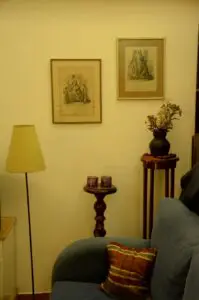
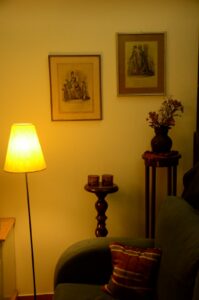
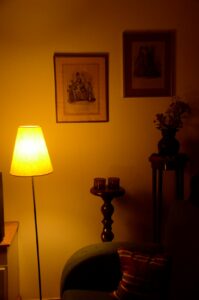
The space above is lit in three different ways.
The first is cool ambient lighting created by LEDs in a cove. This lights up the space pretty well and it is best for cleaning or playing games in the living room. However, it is not very flattering – mostly just practical.
The second is neutral, in this case created by several different sources of light. As the design of this space is transitional (meaning a combination of traditional and modern aesthetics), this color temperature fits best.
The third is (very) warm, created by the combination of a warm light bulb with a yellow lampshade. This is obviously too warm for this space and it doesn’t have enough intensity to highlight the decor.
Pro Tip: If you end up buying a bulb and you don’t like its temperature, you can consider a lamp shade. Lamp shades absolutely have the potential to shift color temperature to your needs!
Keeping those in mind, let’s see how you can safely decide which light to place where.
Choosing The Right White For Your Space
I have compiled a list of tips that you can go through and figure out if warm or cool white fits best.
- Consider the room’s purpose. For any interior lighting designer you advise, this would be their first question. What type of room is this? Is it a bedroom, a bathroom, the kitchen, a family room? If you don’t want to illuminate a whole room but rather a small part of it, then ask yourself what type of activities you use this space for. Is it your kitchen bench, a dining table, a book-reading corner, your bookcase, or an armchair you use when watching movies?
- Consider the paint color. Warm paint colors are enhanced by warm bulbs while cool colors pop up even more under cool light. Kylie Mawdsley from kylieminteriors.ca has laid out an awesome guide that will help you figure out the best color temperature based on your wall paint.
- Consider the overall aesthetic. As a general rule, traditional homes that use earthly materials like stone and wood work better with warm lighting. Older furniture was mostly lit up by natural daylight, incandescent bulbs, and candles. So it makes sense that warm light is ideal for those. On the other hand, modern spaces of contemporary and Scandinavian architecture that focus on a clean, minimalist design, work better with cool lights.
- Personal preference. This is an important step. What do YOU feel most comfortable with? I already mentioned that I don’t enjoy too cool bulbs in my own space but I advise them to people often based on their particular design plan and preferences. Maybe you really don’t like warmer colors. In that case, you now know which temperatures to avoid!
We saw the major differences in warm and cool white, what effect each one has on our mood, and how you can choose the right color temperature to light up your space. So what are you waiting for? You are now ready to take action and make your home as cozy and productive as you need!
If you are more interested in this topic, here are a few FAQs that might help you out:
Related Questions
What is better, warm white or cool white?
Warm white is typically better for relaxation, as ambient light in a family room or bedroom, and as mood lighting especially in rooms with warmer colors. It works best with traditional and transitional designs. Cool light is better for work, performing tasks, and lighting up spaces when daylight is not an option. It works best with contemporary and minimalist designs.
Is warm or cool light better for the eyes?
Warm light is better for the eyes. Cool (or blue) light, like the one emitted by computer screens, TVs, and smartphones, can cause strain and fatigue, dry eyes, and headaches. The “night” option on your screens warms the light and makes it easier on the eyes. Warm light is also best for reading.
Which is brighter, cool white or daylight?
Brightness is measured by lumens and not color temperature. However, the cooler the light, the brighter we perceive it. Thus, daylight is brighter and bluer than a cold white bulb.
Is 3000 K warm or cool?
Light of 3000 K is warm. This color temperature is often found in homes, but warm light bulbs can be as low as 2200 K. A cool bulb would exceed 4000 K. So, if you’re wondering what K is warm white, that would be about 2700–3000 K, as less than that would be too warm for most people.
What is the difference between soft white and daylight bulbs?
Soft white bulbs are warm and cozy, lying in the 2900–3500 K range. They are better for relaxation and leisure but approach neutral lighting, so they are not too warm. Daylight bulbs are between 5000 and 6000 K, and they are meant to mimic daylight as much as possible. They are better for performing tasks easily and being productive.
Is warm white or cool white better for outdoor lights?
The ideal range for outdoor lighting is 2500–4000 K. This is warm to neutral while the higher end of the spectrum slightly touches on cool light. Use warmer light for architectural elements (e.g., stone walls) and patio lighting and cooler light to light up your trees and plants, as well as for gardening and general outdoor activities.
